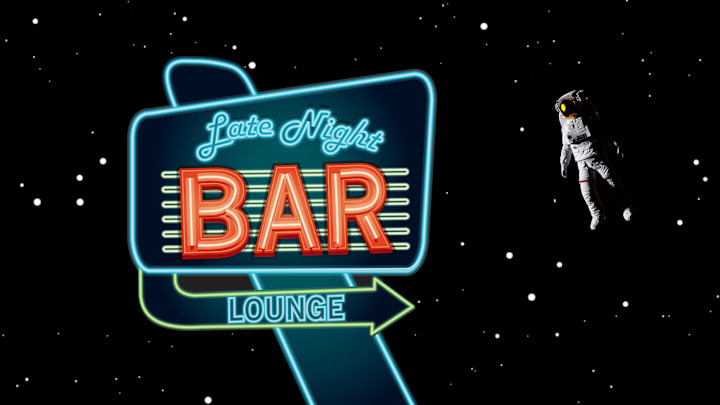In 1969, as Neil Armstrong and Buzz Aldrin sat in a lunar module preparing for their historic moonwalk, Aldrin took out a plastic container. Inside was a chalice and wafer, provided by his Presbyterian church in Houston, and a test tube-like vial of wine. With NASA’s permission, Aldrin took communion.
“In the one-sixth gravity of the moon, the wine curled slowly and gracefully up the side of the cup,” Aldrin later wrote. “It was interesting to think that the very first liquid ever poured on the moon, and the first food eaten there, were communion elements.”
Since Aldrin downed that tube of wine, very little booze has been consumed during space travel. NASA and the International Space Station both prohibit alcohol. Russian cosmonauts are the only segment of space travelers known to imbibe: For a few decades, they carried small amounts of cognac. Unfortunately, this leaves a dearth of quality information on the effect of alcohol in off-Earth environments. (Contrary to popular belief, alcohol does not have a stronger effect at higher altitudes.)
Hit the Space Bar
NASA contemplated the question of serving alcohol in space a few times. In the 1970s, the agency’s Space Food Program considered putting sherry on the menu for long space flights aboard Skylab, the United States’s first space station. It was an optimal drink because it was very chemically stable. Carbonated beverages like beer, in contrast, don’t sink to the bottom of the stomach; they give astronauts “wet burps,” one of many acid reflex issues of low gravity.

The idea was scrapped for a few reasons. When a NASA nutritionist mentioned it in a public lecture attended by a Milwaukee Journal reporter, the agency received a blitz of angry letters. Astronauts themselves worried alcohol could increase incidents of airsickness. (Vomit is a big concern in zero gravity and close quarters.) NASA found that most astronauts were apathetic about drinking in space. The agency’s official reason for eventually nixing the whole idea was that the sherry was not nutritionally necessary and storage space was limited.
The authors of a 1985 NASA report [PDF] on “human requirements for extended spaceflight” also dithered about the subject. “Alcohol, as a recreational drug, may be keenly missed by space travelers, since there is evidence that alcohol plays an important social role in exotic environments,” they wrote. But their main concern was the psychological effect of prolonged confinement and “[s]pecific data on the use of alcohol in confinement are limited.” It could introduce a capricious factor into a tense situation, perhaps leading to personnel issues or accidents.
Bubbles of Booze
The Russians were less cautious. While the Soviet space program officially banned alcohol, cosmonauts often carried small amounts of cognac, author Chris Carberry reported in his book, Alcohol in Space: Past, Present and Future. The drinks were stored in medical bags. When squeezed, they produced a small ball of liquid that cosmonauts caught using straws. On the Soviets’ Mir space station, this was a favorite activity on days off.
In the 1970s, when Mir started hosting researchers and travelers from other countries, including the U.S., NASA was scandalized by the boozy bubbles wafting through the station. But both French and American astronauts enjoyed socializing with their Russian counterparts by chasing around floating orbs of cognac.

Since then, NASA’s reason for prohibition has been based more on chemical than psychological instability. Alcohol is a volatile compound that can evaporate at room temperature. In zero gravity, its droplets could make their way into equipment and damage it. For this reason, NASA and the ISS also ban alcohol in non-drinkable substances, like mouthwash, perfume, and aftershave.
With less consumption in space than in most towns in Utah, there is only anecdotal evidence of alcohol’s effect among the stars—and some astronauts have fond recollections. “You suck up a few drops with a straw and it spreads around the inside of your mouth and a bit up your nose because there is no gravity to pull it into your throat,” Michael Foale, a British-American astronaut who served on Mir in the 1990s, told Carberry. “The alcohol gets absorbed quite instantly, like a cigarette draw where you get the instant buzz. Then, as it goes down your throat, you eventually get that warm feeling.”
Discover More Stories of Humans in Space:
